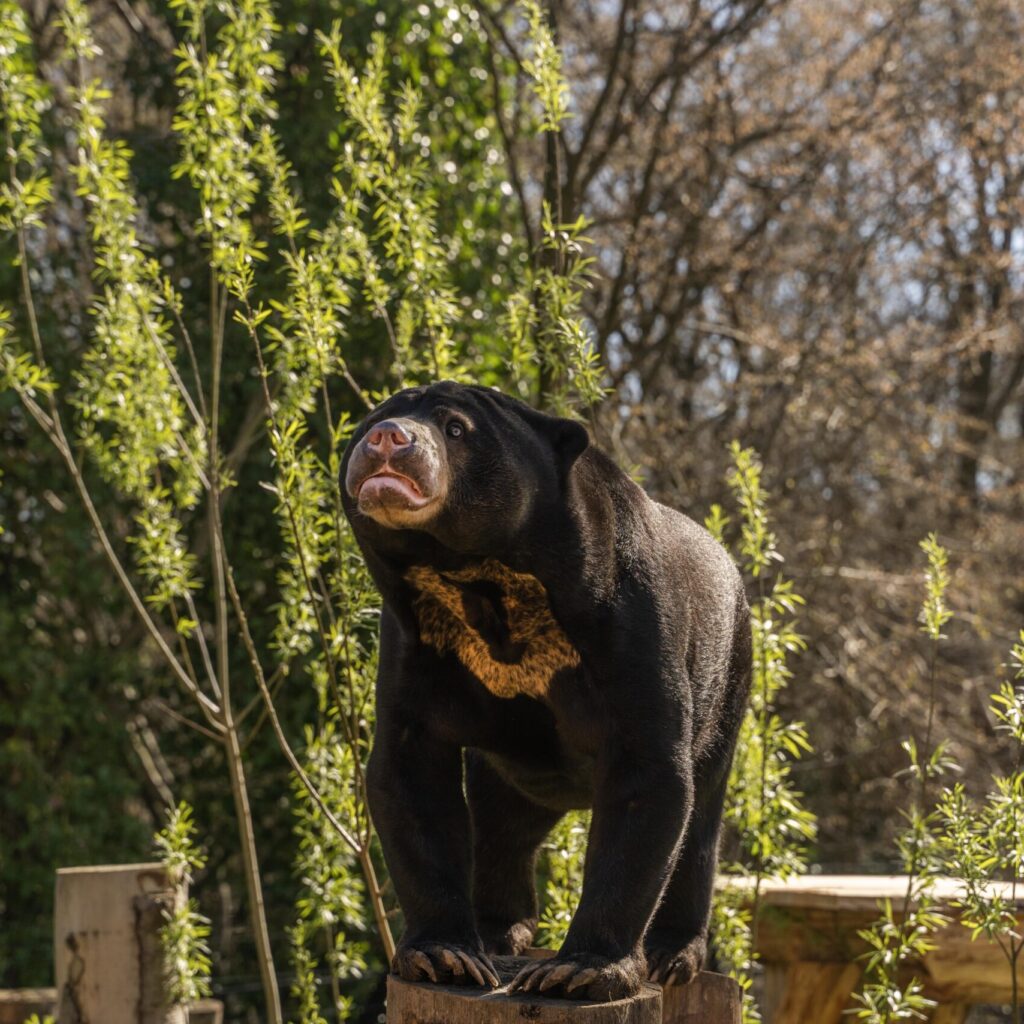Key Facts

Sun bears are named for their bright, golden patched chests, which are said to represent the rising sun. Sun bears are the smallest of the bear species, weighing on average half the weight of an American black bear. However, they do have exceptionally large, long tongues, measuring around 25cm in length. They use their long tongues to aid them in reaching insects from tight spaces and honey from bees nests. Their diet consists of insects, termites, sweet fruits, small rodents and birds.
Sun bears live in the dense forests of Southeast Asia. Being the smallest of the bear species doesn’t take away the power and strength that they hold. The sun bears powerful bite and sharp claws are used to bite and rip into trees to get to the insects inside. They live solitary lives, apart from when female sun bears are raising their cubs, which they raise for around the first 3 years of their lives until the cubs have matured and become fully independent.
